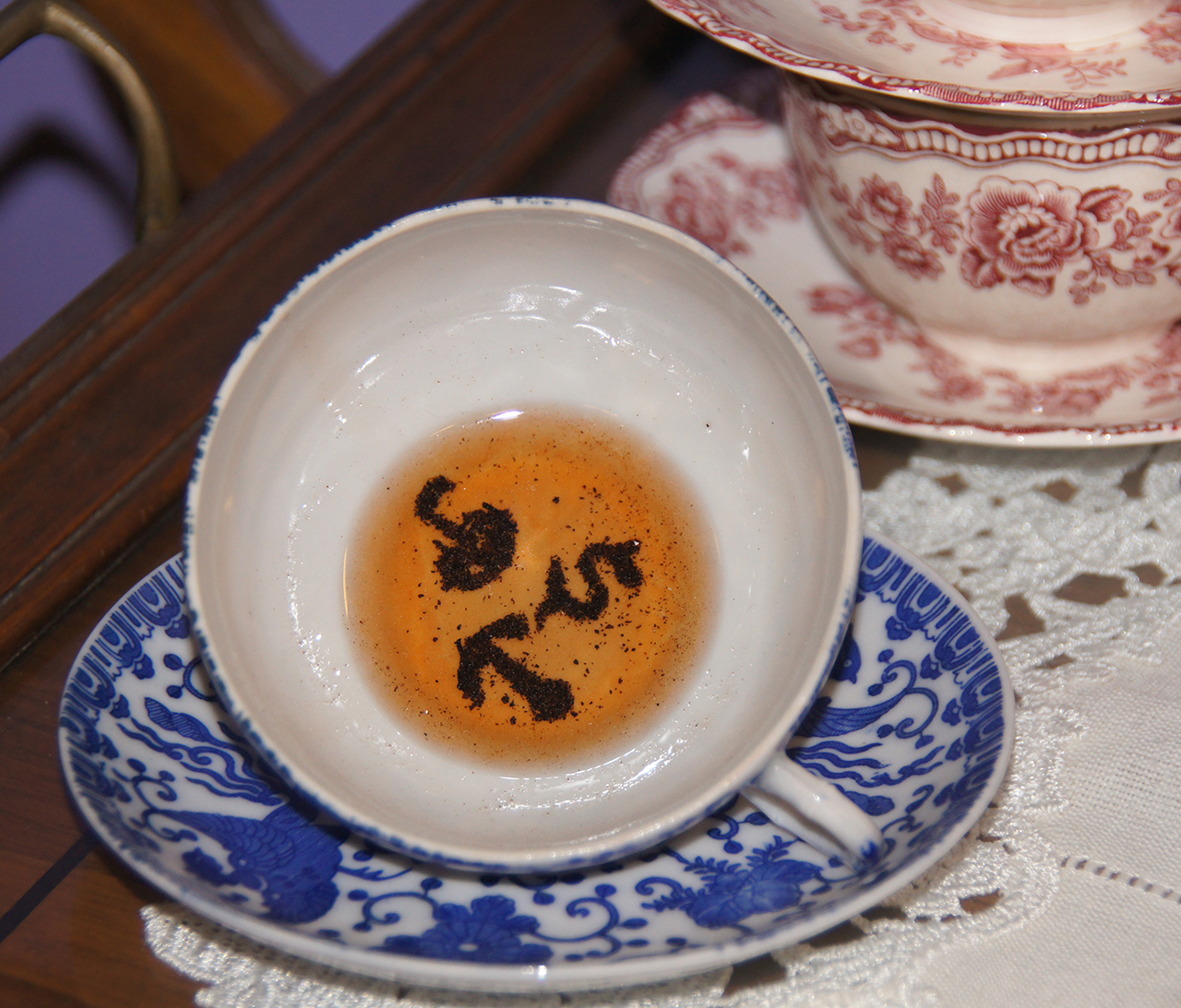Cast Your Fortune in Tea Leaves
Tasseography is the art of Tea Leaf Reading This method of divination seems to have worked it’s way west along the same trade routes as the tea itself. It was practiced by the Rom or Gypsies and was well known in Medieval times.
The person seeking a reading is served hot tea made using loose tea leaves. Black Chinese, Jasmine, Green, Earl Grey, or Ceylon are all great teas to use. It should be noted that the tea in tea bags is too finely ground to work. The tea bag wasn’t even invented until 1908, but that is another story. Once the seeker has finished drinking the tea the reader swirls the last few dregs of tea around the cup and then turns it over on the saucer. The cup is read from the rim at the handle. You can learn more about reading the tea leaves at this site.

Materials needed:
- Old Cups and Saucers
- Tea Leaves
- EasyCast Clear Casting Epoxy
- Transparent Dye Kit for Resin
- Mixing Containers
- Stirring Stick
- Household Glue
- Toothpick or Skewer
- Plastic Spoon
We chose cups and saucers that were nice looking but that were not so expensive that we minded adding permanent resin to them. We also made sure that the cups were wider than they were tall and that there was no decoration in the bottom of the cup. We made sure that we removed any price stickers and made sure they were clean and dry.
The leaves in loose tea are often a little large. This is not traditional but you can crush the loose tea leaves in a mortar and pestle if necessary to make the bits of leaf a little smaller.
First to create the Fortune. You will be doing this using glue on the inside bottom of the teacup. The glue that you use should dry clear and should be applied in a fine line using a toothpick or bamboo skewer. Apply the glue with the toothpick or skewer into the shape of the fortune you have chosen for the bottom of the cup.
Then, sift your semi-ground tea leaves over the wet glue and shake the cup gently to coat the glue lines. Dump out the excess leaves. If you are putting more than one design in the bottom of the cup, let the glue dry between applications and apply the tea leaves to each design as you work. You can use the skewer to gently adjust the leaves in the glue if necessary. Once you have the design perfected allow all the glue to dry very well.
Mix equal parts of a casting resin and hardener in a disposable container. A half once of each was plenty to cast several fortunes for posterity. Follow the directions on the box for best results in mixing the resin and hardener. Add some tinting dye one drop at a time and stir to see the color. Tea leaf brown is a reddish brown and is made by combining all three tinting colors. To get a brown tea color you will need mostly yellow dye, slightly less red and only one or two drops of blue.
Spoon the resin into the cups a little at a time until it just covers the tea leaves. You want the cup to look wet but don’t want it to look like there is much tea in the cup. (We put too much resin in the cup in the picture). Tilt the cup this way and that to get the resin up the sides of the cup just a little. Then, finally let it all set.
Date
May 20, 2016
Category
Magical




No Comments